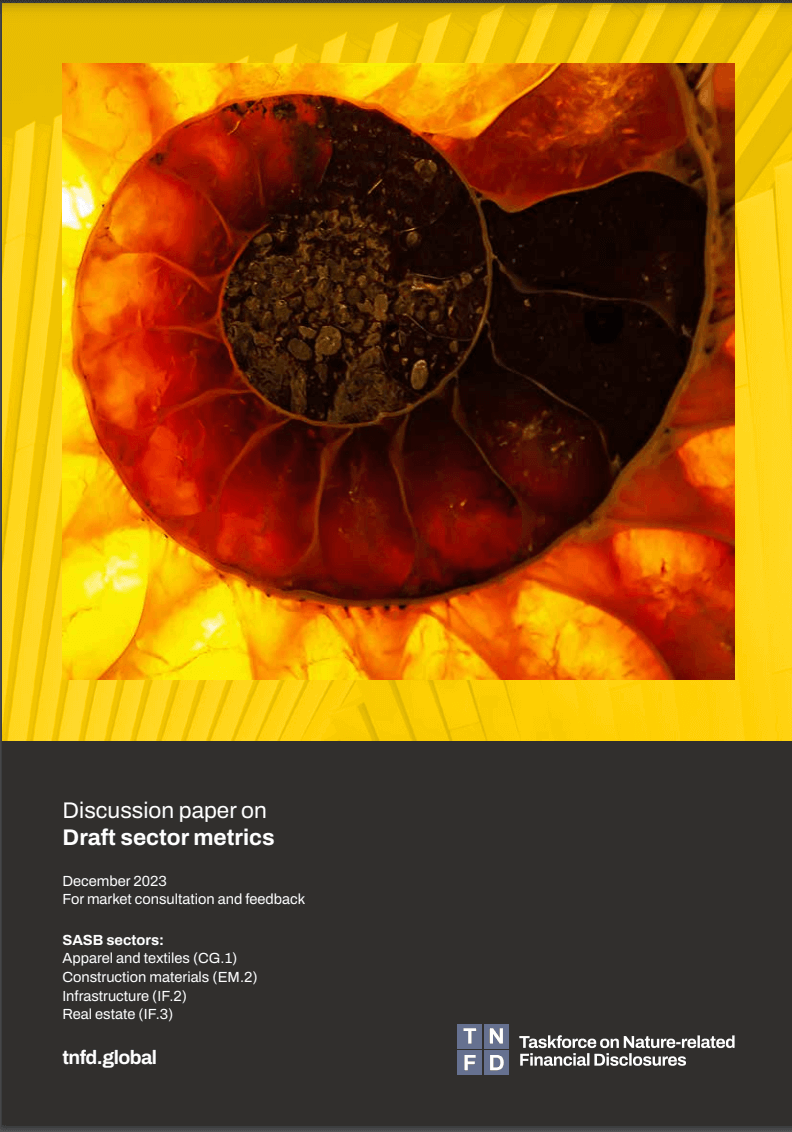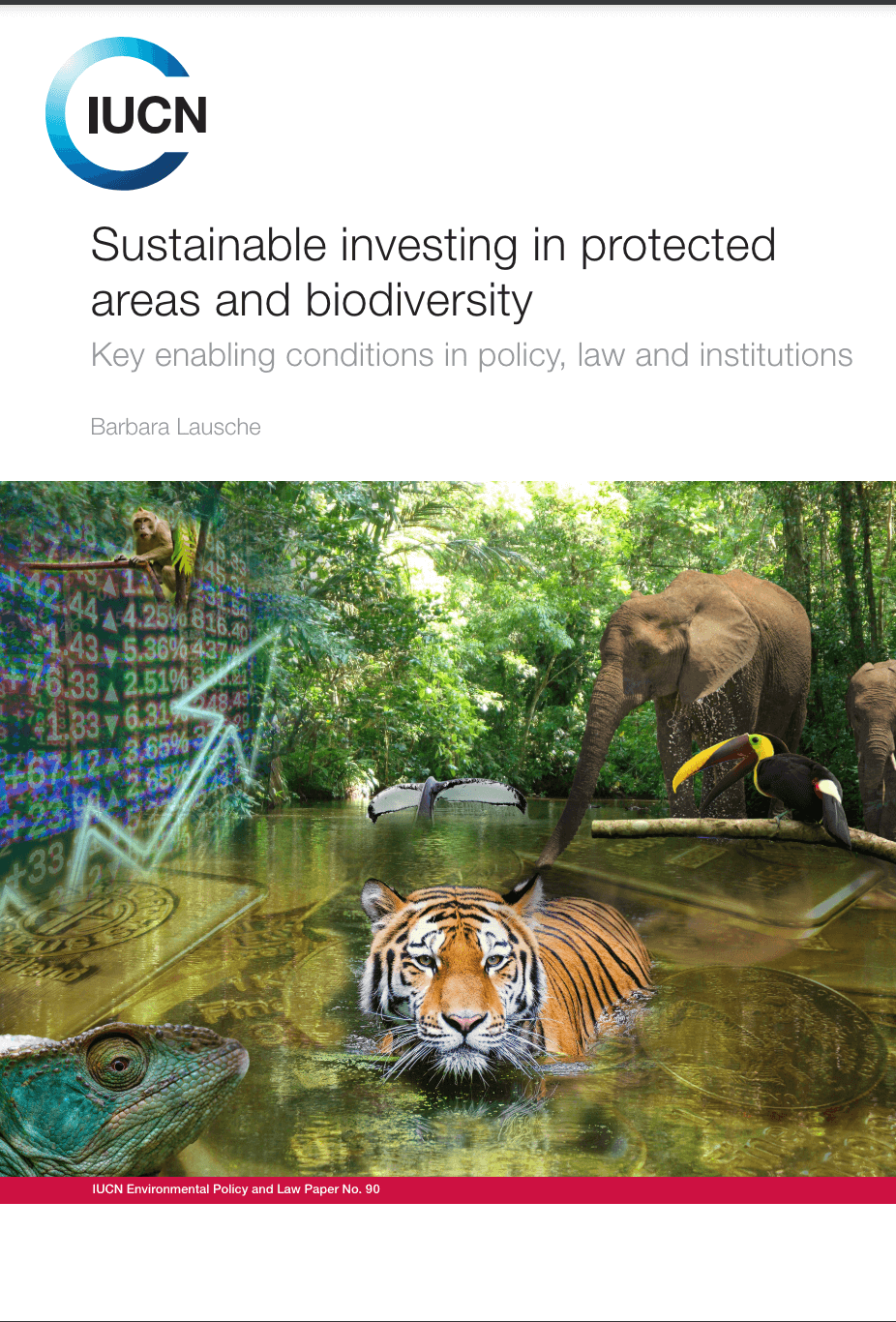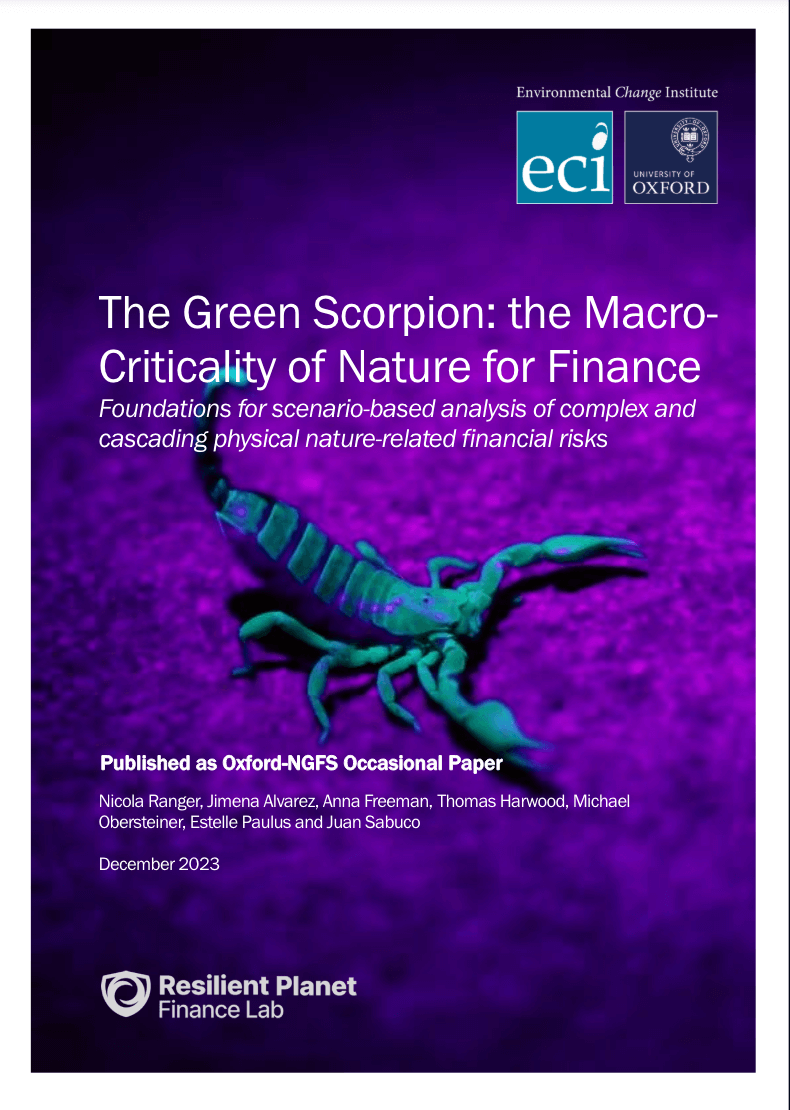The Green Scorpion: the Macro Criticality of Nature for Finance. Foundations for scenario-based analysis of complex and cascading physical nature-related financial risks
Detalles
| The main objective of this report is to draw on the science and economics of nature to help develop scenario approaches to nature-related financial risks needed to assess the macrocriticality of nature for financial institutions, inform action by central banks and the financial sector, and relate this to a preliminary assessment of the relative scale of risks in different countries. Different applications require different types of scenarios. For example, for the prudential regulation of central banks and supervisors, which is the main objective of this report, and in relation to the establishment of capital requirements for financial institutions, plausible but more extreme scenarios need to be explored. The document focuses on financial risks related to physical nature, i.e. those associated with physical changes in nature and the ecosystem services it generates for our societies and economies. To design a scenario-based approach, the authors take as a starting point the conceptual framework proposed by NGFS (Network for Greening Financial Systems) and the guidance on scenarios and risk assessment from the Task Force on Nature-related Financial Disclosures (TNFD), learn from climate financial risk assessment, and develop a set of principles and framework for assessing the macrocriticality of related risks with nature based on science and economics. All this, supported by new research on the channels of risk transmission from nature to finance, including an analysis of more than 60 historical analogies. The result is an inventory of nearly 80 potential impacts of nature-related physical hazards that can serve as a basis for scenario development. Another innovation in this report is the shift from dependency to risk. It presents a new preliminary approach to risk detection for financial institutions, central banks and supervisors, and demonstrates how risks can be quantified for five potential risk dimensions (pollination, groundwater, surface water, air quality and water quality (pollution)). |
Recursos relacionados

TNFD discussion paper on proposed sector disclosure metrics
This TNFD document provides draft key disclosure metrics for the following sectors: Consumer GoodsClothing and textilesExtractiveMining Mineral ProcessingConstruction MaterialsOil GasFood BeverageFood…

Sustainable investing in protected areas and biodiversity
This publication provides initial guidance to countries on key tools for attracting public and private sector investments in conservation and…


